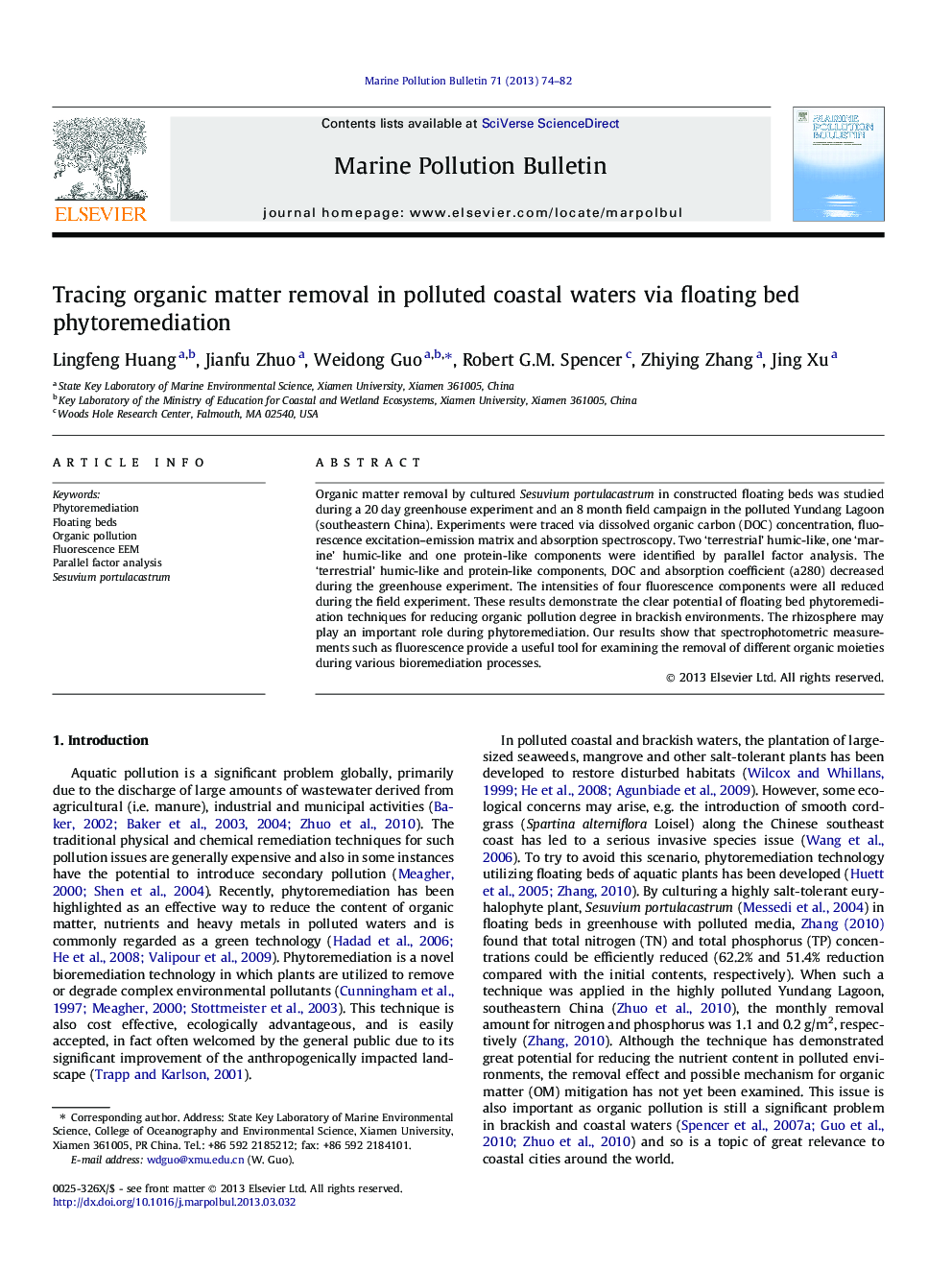| Article ID | Journal | Published Year | Pages | File Type |
|---|---|---|---|---|
| 6358968 | Marine Pollution Bulletin | 2013 | 9 Pages |
â¢Phytoremediation can reduce organic pollution in brackish environments.â¢EEM-PARAFAC can trace DOM dynamics during the phytoremediation process.â¢Sesuvium portulacastrum removed DOC, CDOM and certain EEM fluorophores.â¢The rhizosphere plays an important role in phytoremediation.
Organic matter removal by cultured Sesuvium portulacastrum in constructed floating beds was studied during a 20Â day greenhouse experiment and an 8Â month field campaign in the polluted Yundang Lagoon (southeastern China). Experiments were traced via dissolved organic carbon (DOC) concentration, fluorescence excitation-emission matrix and absorption spectroscopy. Two 'terrestrial' humic-like, one 'marine' humic-like and one protein-like components were identified by parallel factor analysis. The 'terrestrial' humic-like and protein-like components, DOC and absorption coefficient (a280) decreased during the greenhouse experiment. The intensities of four fluorescence components were all reduced during the field experiment. These results demonstrate the clear potential of floating bed phytoremediation techniques for reducing organic pollution degree in brackish environments. The rhizosphere may play an important role during phytoremediation. Our results show that spectrophotometric measurements such as fluorescence provide a useful tool for examining the removal of different organic moieties during various bioremediation processes.
